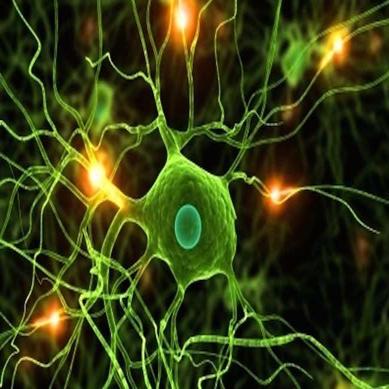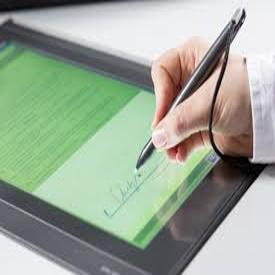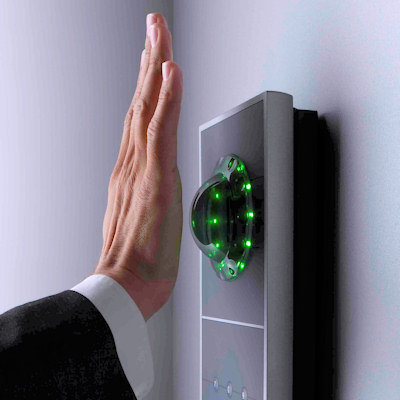-
Brain
 Brain signals have been investigated within the medical field for more than a century to study brain diseases like epilepsy, spinal cord injuries, Alzheimer's, Parkinson's, schizophrenia, and stroke among others. They are also used in both brain computer and brain machine interface systems with assistance, rehabilitative, and entertainment applications. Despite the broad interest in clinical applications, the use of brain signals has been only recently investigated by the scientific community as a biometric characteristic to be used in automatic people recognition systems. However, brain signals present some peculiarities, not shared by the most commonly used biometrics, such as face, iris, and fingerprints, with reference to privacy compliance, robustness against spoofing attacks, possibility to perform continuous identification, intrinsic liveness detection, and universality. These peculiarities make the use of brain signals appealing. On the other hand, there are many challenges which need to be properly addressed. The understanding of the level of uniqueness and permanence of brain responses, the design of the optimal elicitation protocols, the minimization of the invasiveness of the acquisition process to increase users' convenience are only few of the challenges which need to be tackled.
Brain signals have been investigated within the medical field for more than a century to study brain diseases like epilepsy, spinal cord injuries, Alzheimer's, Parkinson's, schizophrenia, and stroke among others. They are also used in both brain computer and brain machine interface systems with assistance, rehabilitative, and entertainment applications. Despite the broad interest in clinical applications, the use of brain signals has been only recently investigated by the scientific community as a biometric characteristic to be used in automatic people recognition systems. However, brain signals present some peculiarities, not shared by the most commonly used biometrics, such as face, iris, and fingerprints, with reference to privacy compliance, robustness against spoofing attacks, possibility to perform continuous identification, intrinsic liveness detection, and universality. These peculiarities make the use of brain signals appealing. On the other hand, there are many challenges which need to be properly addressed. The understanding of the level of uniqueness and permanence of brain responses, the design of the optimal elicitation protocols, the minimization of the invasiveness of the acquisition process to increase users' convenience are only few of the challenges which need to be tackled.
Our research in this field aims at further speculating on those issues which represent an obstacle towards the deployment of biometric systems based on the analysis of brain activity in real life applications.
Publications
-
Signature
 Handwritten signature has always been used as a method to verify the identity of a user for applications like document authentication, credit card transactions, cheque verification, attendance recording, and forensics. Although signature is still used to verify the identity of an individual by visual inspection, a constantly growing interest by both academia and industry has led to the development of systems for automatic signature-based user verification. Nowadays, signature is one of the most accepted biometrics since it is perceived as a noninvasive and nonthreatening characteristics by the majority of the users being the act of signing part of everyday life. A signature can be easily acquired either using a classic ink pen or by means of specialized devices such as graphic tablet, pen sensitive computer display, digital pens, or PDA.
Handwritten signature has always been used as a method to verify the identity of a user for applications like document authentication, credit card transactions, cheque verification, attendance recording, and forensics. Although signature is still used to verify the identity of an individual by visual inspection, a constantly growing interest by both academia and industry has led to the development of systems for automatic signature-based user verification. Nowadays, signature is one of the most accepted biometrics since it is perceived as a noninvasive and nonthreatening characteristics by the majority of the users being the act of signing part of everyday life. A signature can be easily acquired either using a classic ink pen or by means of specialized devices such as graphic tablet, pen sensitive computer display, digital pens, or PDA.
Because of the wide social and economical impact of applications based on signature verification, in the last decades a huge effort has been devoted to research in this field.
Our research activity involves the design of feature extraction and selection methodologies and the design of template protection approaches.
Publications
-
Privacy Enhancing Technologies
 The use of biometric data raises many security issues which are peculiar of biometric based recognition systems not affecting other approaches employed for automatic people authentication. In fact, some biometrics such as voice, face, fingerprints and many others are exposed traits, they are not secret and therefore they can be covertly acquired or stolen by an attacker and misused. This can lead for example to identity theft. Moreover, raw biometrics cannot be revoked, canceled, or reissued if compromised, since they are user's intrinsic characteristics and they are in limited number. Therefore, if a biometrics is compromised, all the applications making use of that biometrics are compromised, and since biometric identifiers are permanent an issue is raised when it is needed to change them. The use of biometrics poses also many privacy concerns, in fact, when an individual gives out his biometrics, either willingly or unwillingly, he discloses unique information about himself. It has also been demonstrated that biometric data can contain relevant information regarding people health. This information can be used, for example, to discriminate people for hiring or to deny insurance to those with latent health problems. The use of biometrics can also raise cultural, religious as well as ethnicity related concerns. To some extent, the loss of anonymity can be directly perceived by users as a loss of autonomy. Therefore the need to protect both privacy and security from both a legal, procedural and a technological point of view arises.
The use of biometric data raises many security issues which are peculiar of biometric based recognition systems not affecting other approaches employed for automatic people authentication. In fact, some biometrics such as voice, face, fingerprints and many others are exposed traits, they are not secret and therefore they can be covertly acquired or stolen by an attacker and misused. This can lead for example to identity theft. Moreover, raw biometrics cannot be revoked, canceled, or reissued if compromised, since they are user's intrinsic characteristics and they are in limited number. Therefore, if a biometrics is compromised, all the applications making use of that biometrics are compromised, and since biometric identifiers are permanent an issue is raised when it is needed to change them. The use of biometrics poses also many privacy concerns, in fact, when an individual gives out his biometrics, either willingly or unwillingly, he discloses unique information about himself. It has also been demonstrated that biometric data can contain relevant information regarding people health. This information can be used, for example, to discriminate people for hiring or to deny insurance to those with latent health problems. The use of biometrics can also raise cultural, religious as well as ethnicity related concerns. To some extent, the loss of anonymity can be directly perceived by users as a loss of autonomy. Therefore the need to protect both privacy and security from both a legal, procedural and a technological point of view arises.
Security and privacy in biometric systems have been traditionally seen as two requirements hindering each other. Only in the recent past researchers have started investigating it as a joint optimization problem which needs to be tackled from both a legal, procedural, and a technological point of view.
Within this framework our research activity focuses on the design of secure and privacy compliant biometric based recognition systems by means of both biometric cryptosystems and cancellable approaches with application to different biometric characteristics.
Publications
-
Keystroke
 Keystroke dynamics refers to user authentication based on how a user
types rather than what a user types at a terminal equipped with a keyboard, which can be a QWERTY keyboard used with personal
computers, or a generic interface equipped with keys which can be pressed. Therefore this technique has
potential applications with ATMs, cellular phones, and similar. The first documented observation that
each user as a unique way of typing dates back to the end of the 19th century, when telegraphists were
able to identify other operators listening to the rhythm of their Morse code sequences. However, the first
application of keystroke analysis to user identification is much more recent.
Keystroke dynamics refers to user authentication based on how a user
types rather than what a user types at a terminal equipped with a keyboard, which can be a QWERTY keyboard used with personal
computers, or a generic interface equipped with keys which can be pressed. Therefore this technique has
potential applications with ATMs, cellular phones, and similar. The first documented observation that
each user as a unique way of typing dates back to the end of the 19th century, when telegraphists were
able to identify other operators listening to the rhythm of their Morse code sequences. However, the first
application of keystroke analysis to user identification is much more recent.
Our research activity focuses on the design of keystroke based user recognition techniques for mobile phones and smart devices with touch interfaces.
Publications
-
Vein Pattern
 The use of subcutaneous vein patterns is rapidly emerging as an appealing biometrics due to the advantages it provides compared to others characteristics. Specifically, an always increasing interest has been shown both by the academia and the industry towards the use of hand (dorsal, palm, and fingers) vein patterns for secure user recognition. In fact vein patterns are difficult to steal, provide liveness detection concurrently to recognition, and allow the use of contactless imaging devices ensuring convenience for the users.
The use of subcutaneous vein patterns is rapidly emerging as an appealing biometrics due to the advantages it provides compared to others characteristics. Specifically, an always increasing interest has been shown both by the academia and the industry towards the use of hand (dorsal, palm, and fingers) vein patterns for secure user recognition. In fact vein patterns are difficult to steal, provide liveness detection concurrently to recognition, and allow the use of contactless imaging devices ensuring convenience for the users.
Our research focuses on the design of acquisition devices for contactless hand and finger vein acquisition and on the design of enhanced vein feature extraction techniques and matching approaches.
Publications

